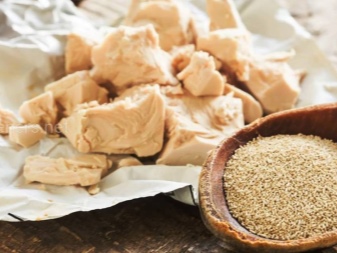Rules for feeding flowers with sugar

Specialized garden centers offer a variety of fertilization and feeding options for various crops, including flowers. But many growers are not limited to the choice of ready-made products. True lovers of floriculture always have a touch of creativity in growing their favorite green pets. Folk remedies and forgotten "grandmother's recipes" are often used to get highly decorative lush flowers.

For which plants is it suitable?
Sugar dressing is one of the most popular natural fertilizers. They are a source of glucose, this essential component for vital biochemical processes in plants. Incoming glucose is an intense source of energy and stimulates photosynthesis in plants.
Sugar is almost suitable for all indoor plants, but flowering crops respond to feeding especially actively: the flowering period is extended, the crown leaves grow larger, acquire a rich green color.
Homemade roses, succulents (their typical representatives are cacti), as well as large-sized plants (ficuses, dracaena, palm trees) and smooth-leaved species respond well to sugar feeding.

Signs of flower depletion are:
- slowdown in growth;
- decrease in the intensity of coloring of leaves and stems;
- reduction in leaf size;
- stretching and thinning of the stems;
- lack of flowering;
- yellowing and subsequent discarding of leaves;
- loss of decorativeness and decreased immunity to plant diseases.
Having found at least one of these signs, you must immediately feed the plants.

Recipes
Sugar dressings have a beneficial effect not only on indoor flowers, but also on garden flowers. Combined dressings consisting of sugar and other natural ingredients are especially useful.: yeast, wood ash, coffee grounds. But it is necessary to make nutritional mixtures with knowledge of the matter. Top dressing affects different crops in different ways, so it is certainly taken into account what is growing in the garden area or what plants "live" on the windowsill.
The composition of the soil also changes unevenly. For example, coffee grounds slightly acidify the soil, yeast can cause excessive fermentation, and wood ash in case of an overdose will provoke root burns.
All factors must be considered for a successful outcome.

Here are some recipes for making effective sugar-based dressings, recommended by experienced flower growers.
- The easiest recipe is 1 tbsp. a spoonful of granulated sugar (without a slide) for 1 liter of warm water. There is no single opinion regarding such feeding. Some flower growers recommend watering once every 1-2 weeks, but most believe that indoor flowers should be watered with the resulting solution once a month (not more often!).
- You can do even easier - scatter dry granulated sugar over the soil surface in a flower pot (1 teaspoon without a slide for 1 pot) and pour clean water (about 1 glass). But flower growers consider liquid sugar solutions to be more effective, since in a liquid state, together with water, sugar evenly flows to all elements of the root system, and surface top dressing can provoke the appearance of mold and pests.
- Feeding with sugar in combination with yeast is very useful. It is known that substances produced with the participation of yeast (B vitamins, trace elements, various phytohormones) stimulate active plant growth, activate regenerative processes in plant tissues, strengthen the root system, accelerate the activity of soil microflora, promote increased production of carbon dioxide, which helps rapid assimilation of glucose. Nutritional supplements with yeast equated to complex fertilizers.
Sugar and yeast dressing can be prepared as follows:
- Dissolve 1 teaspoon of sugar and 1 g of dry yeast in 1 liter of settled water and water the flowers at the rate of 50-100 ml of the mixture per 1 kg of soil in flower pots;
- 1 tbsp. a spoonful of sugar and 10 g of dry yeast are dissolved in 1 liter of warm water and kept for about 2 hours in a warm place, then the mixture is diluted with settled water in a ratio of 1: 5 and used for watering (the amount of solution is prepared taking into account how many flowers need to be fed, but proportions remain unchanged).


After yeast dressing, flower growers recommend adding a little (5-10 g) wood ash to the soil to replenish calcium.
Folk recipes are not recommendations created once and for all. They are constantly being improved empirically thanks to the experiments of amateur flower growers and their observations of the results obtained. Publications constantly appear on the Internet on special sites, in blogs, on thematic forums, where growers share their achievements and learn from each other's useful experience.

Application technology
In autumn and winter, when there is little natural light, the plants weaken and especially need feeding. But if flowerpots with flowers are exhibited in rooms with insufficient illumination, then they need to be given increased attention and fed at any time of the year, without waiting for obvious problems in the growth and development of the plant.
When feeding, one important rule must be remembered (growers call this rule “golden”): do not exceed the dosage of any fertilizers, and sugar too. Better to add less than the excess. Plants will not be able to cope with an overdose, and the consequences will be very far from the expected result. It is much easier to correct "underfeeding" than to restore a depressed plant after an overdose.

For weakened plants, it is recommended to reduce the concentration of nutrient solutions by half, additionally diluting them with clean water without chlorine.
The plants must be closely monitored, and if the flower has noticeably "revived" after feeding, then the agricultural technique is carried out correctly. Instead of sugar, you can use pharmacy glucose tablets. Take 1-2 tablets, dissolve in 1 liter of warm water, and the feeding is ready. Glucose is absorbed by plants only if there is a sufficient level of carbon dioxide in the soil. Excess glucose creates conditions for the development of fungal diseases and putrefactive bacteria in the soil... To prevent this, it is recommended to use sugar dressings together with biological products of the EM series, for example, "Baikal-EM-1" or "Vostok-EM-1".


Sugar solution can be applied not only under the root, but also sprayed over the crown, and wipe the leaves with a damp cloth dipped in sugar solution, if the leaves are wide. For some plants (for example, phalaenopsis) it is recommended to make a compress on the leaves: dry light napkins are moistened in a solution (1 tablespoon of sugar per 1 liter of water), applied to the leaves and left for half an hour, then the napkins are removed.

Major mistakes
When using sugar dressings, beginner growers may unknowingly make mistakes that, instead of being useful, will seriously harm indoor flowers. Most often, such errors occur.
- Glucose overdose due to too frequent watering with sugar solution... Excess glucose inhibits the development of plants, rotting of the root system and death is possible. Watering flowers with sweet water is recommended no more than 1 time per month.
- Violation of the feeding schedule... Only the systematic introduction of a sugar solution will bring a visible result, since the beneficial effect of sugar is temporary. To prolong it, you need to feed the plants in a timely manner.
- Incorrect ratio of components for flowering crops and for ornamental deciduous. Often, beginner growers are at a loss as to why the plant "does not want" to bloom with good growth, many shoots and a juicy green crown, but the whole point is in the wrong proportions of dressings.

Natural plant nutrition with folk remedies is a worthy, environmentally friendly alternative to industrial species. Not all fertilizers sold in modern garden centers are guaranteed to be safe. Of course, you shouldn't assume that sugar dressing is a panacea for all ills. They cannot completely replace all fertilizers, but only promote the absorption of nutrients. This is just one small link in the complex care chain for the cultivation of flowering and decorative foliage plants.
For tips on feeding flowers with sugar, see the following video.







































































































The comment was sent successfully.